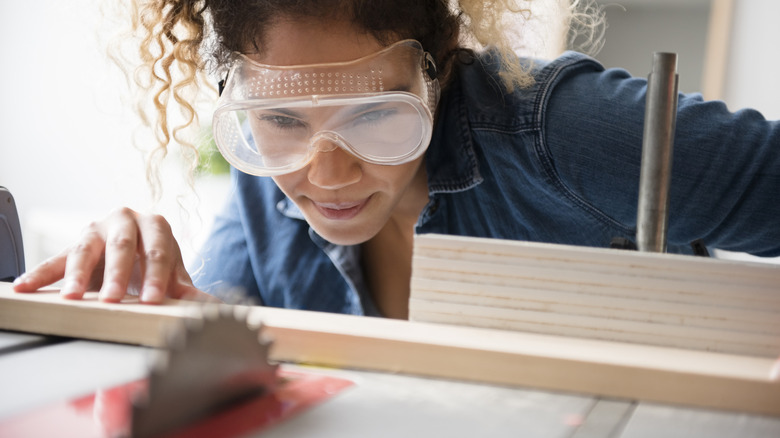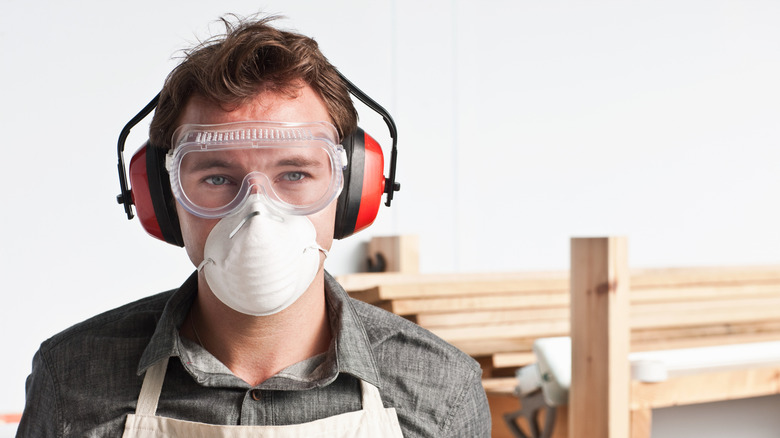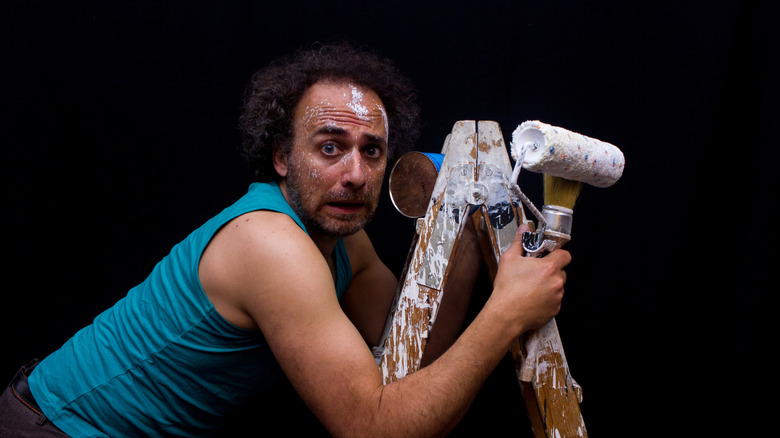Safety Basics To Know Before Embarking On A DIY Project
We may receive a commission on purchases made from links.
With the excitement and fun of starting a DIY project running high, it is easy to get ahead of yourself and give short shrift to working safely. The ready, shoot, aim process is both common and understandable, but taking a step back and deliberately planning your project with safety in mind is an important first step. There is an old saying that goes something like: a minute of planning is worth an hour of power. Which is a good motto for professionals or DIYers, and that planning should include safety considerations. But how do you go about that planning? What is important?
Worksite or workplace safety is first. Examine where you will be doing the work and remove potential problems. Make sufficient space for your task. Don't crowd yourself in a tight space that constrains your movement. Remove any trip hazards — electric cords on the floor or other materials. Move those things away until the task is done. Don't let anything hanging over your workpiece get in your way.
Do you have sufficient lighting to see what you are doing? If not, get some task lighting. Ladders are a special concern when it comes to DIY tasks. Be certain that your ladder is securely placed on the ground or floor and is not lifting to one side or another. And if it is leaning on something like the edge of a roof or tree limb, angle the ladder steeply enough that as you climb, it will remain in firm contact with the surfaces above and below. If your ladder situation seems a bit sketchy, take the time to make it right.
Protecting your eyes, ears, and lungs with good safety equipment
Personal safety gear is essential when it comes to keeping DIY efforts safe. Start by protecting your eyes. For many DIY tasks, basic safety glasses provide good protection from particulate, like if you are sanding or using a saw. But if you are chipping tiles off a wall, using a chainsaw, or demolishing concrete, safety goggles or face shields that fit closely to your face are the proper choice. They will prevent large pieces from slipping behind your safety glasses.
The decibel level that will harm your ears is probably lower than you think, but the best advice is err on the side of caution. There is a wide selection of hearing protection available. From foam ear plugs that cost just a few pennies each to noise-cancelling earmuffs. Any of them will likely be sufficient for almost all DIY tasks.
For protective masks, there are roughly three different mask varieties to consider. The first is an inexpensive filtering mask designed to protect your lungs from larger particulates, like when mulching leaves with your mower or sanding exterior wooden siding. The second mask can filter even the tiniest particulates: the N95 that many of us remember from the COVID-19 crisis keeps ultra-fine dust from getting in your lungs. To protect you from fumes of volatile organic compounds (VOCs) you'll need to use something more hardcore, like this 3M reusable respirator, which is a mask that seals to your face and has filters that remove VOCs from the air you're breathing. There are VOC hazards in lacquer, contact cement, and some cleaning chemicals.
The key to DIY safety is common sense
There are other safety considerations before you get started. Loose clothing and long hair can get caught in saws, sanders, or the like. When using power tools in your home, short sleeves are a good idea. But when handling chemicals or noxious weeds, long sleeves and gloves are essential. But don't wear gloves if you are using a table saw or a drill press — they can get caught in the tools.
If you are working outside, consider safety glasses that include UV protection. Never use tools that you are uncomfortable handling or that are worn or broken. Take the time to read the operating instructions of tools you are not familiar with. Keep your fingers away from sharp blades of any kind, especially those that are spinning. Safety guards are there for a reason. Lift heavy things properly; get help if needed.
This may seem like common sense, but keep in mind that sometimes when we are excited about starting a project, we can lose sight of what might seem like small details. So, enjoy your work, but don't get carried away. If there's a task that makes you feel uncomfortable, listen to yourself. Take a step back and figure out how to do it so you are confident that it will be safe. And pace yourself, too. Never work when you are overly tired, and only enjoy a beer or two after you are done working for the day. Fixing or upgrading your home can be so fulfilling and life-improving, but be sure to approach the work with safety in mind.


